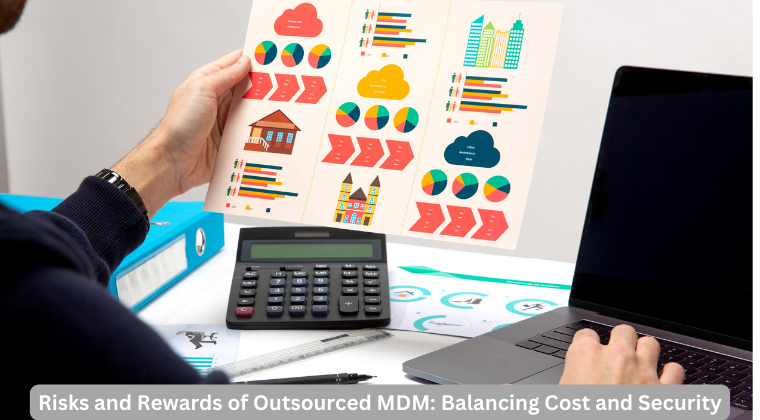Benefits And Risks Of Outsourced MDM: Managing Cost & Security

Mobile Device Management (MDM) solution is an effective tool for managing mobile devices used in organizations. The trend of remote working and BYOD has globally increased, so organizations need to embrace this change to remain competitive and productive.
However, these new technologies come with a unique set of challenges that organizations must address to gain maximum advantage. One such challenge is the deployment and management of MDM solutions which require technical expertise, higher cost, IT infrastructure, and human resources.
Therefore, organizations prefer to adopt outsourced MDM solutions where some third-party service provider is responsible for managing MDM software. This article explores the benefits and risks of outsourced MDM solutions by putting an emphasis on best practices that organizations should follow for balancing security and cost.
Benefits of Outsourced MDM Solution
The following are some of the advantages of outsourced MDM solutions due to which Small and Medium Sized Enterprises (SMEs) opt for this option.
- Cost-effectiveness: To deploy MDM solutions in-house, organizations need to invest in hardware, software, training, and human resources, which is quite expensive.
- On the flip side, outsourced MDM solution is managed by some third party and the organization does not have to spend on infrastructure and a workforce who deploy, configure, and maintain the software. This saves a lot of money that organizations can utilize on other primary operations.
- Scalability: In the case of managing MDM solutions internally, it becomes extremely difficult for the growing business to accommodate new devices or even increase the number of services as a huge cost is associated with it.
- With outsourced MDM software, organizations can easily scale the solution as third-party service providers are experienced teams equipped with technical expertise and resources to scale up the services.
- Technical expertise: The teams managing outsourced MDM solutions are technically sound and experienced in managing mobile devices; therefore, are in the best position to handle the devices and provide support and guidance regarding best practices.
- Security: Outsourced MDM solutions can help organizations in achieving optimal security due to the incorporation of security protocols and access control mechanisms. Furthermore, the teams are experienced in identifying and mitigating cyber-attacks.
Risks of Outsourced MDM Solution
Limited control: In the case of outsourced MDM solutions, organizations have limited control over their assets and a third-party vendor is managing those critical devices. This increases the risk of unauthorized data disclosure in case the organization is not secure enough and experiences a cyberattack.
- Compliance issues: As organizations store and process confidential information of customers, they need to comply with applicable regulatory requirements to avoid fines and maintain their reputation. In case the third-party vendor is not aware of these regulations, or they do not adopt proper measures to ensure compliance with lawsuits then the organization’s reputation and business operations would be at stake.
- Integration issues: The outsourced solution can create issues in integrating MDM software with existing software and systems if the solution is not compatible with existing infrastructure. This makes business operations quite difficult and challenging to perform.
Balancing Cost and Security
For outsourced MDM solutions, organizations must perform a thorough analysis and conduct due diligence in selecting cost-effective third-party vendors for providing MDM services as in this setting organizations give up control of critical data and devices as well.
Therefore, the vendor should be trustworthy and reliable enough to handle critical devices of the organization. For this, the management should consider the track record of provided services, compliance programs, security practices, and SLAs to ensure that the vendor considers the organization’s security and compliance requirements seriously.
To reduce costs, the roles and responsibilities should be clearly defined for both organization and vendor so that additional costs can be reduced. Moreover, critical devices that need management should be prioritized and more devices can be added later once the business grows to reduce the initial cost.